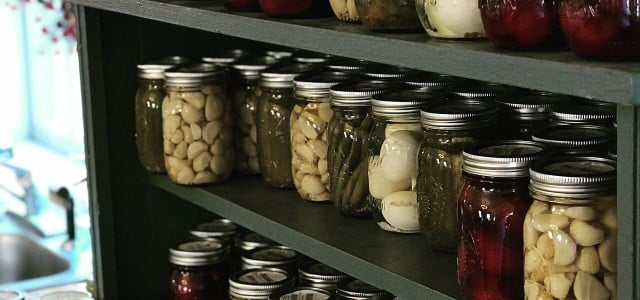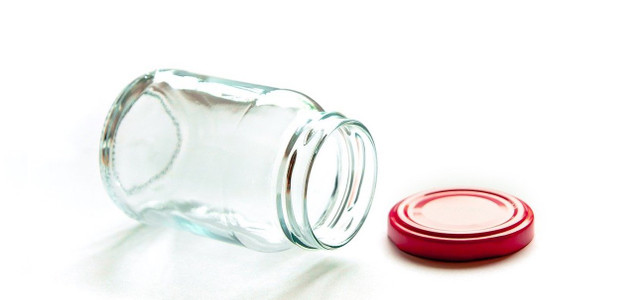Did you know that you can freeze food in mason jars? We’ll share six tips on how to safely freeze food in mason jars, so you can avoid having to use freezer bags or other containers made out of plastic.
Buying your fruits and veggies from local growers when it is in season in your region is not only an effective way to limit your carbon footprint, you’ll also get a much better quality and taste than if you buy frozen produce at the store. Preparing larger portions and freezing some of the food will also save you time, money, and lots of packaging waste!
Many people feel unsure about whether you can freeze food in mason jars because they are worried about how the glass might react to the cold. Freezing food in mason jars is perfectly possible and easy, but there are a few things you’ll have to watch out for. Below, we’ve compiled the most important tips on how to safely freeze food in mason jars.
1. Picking the Right Kind of Jar
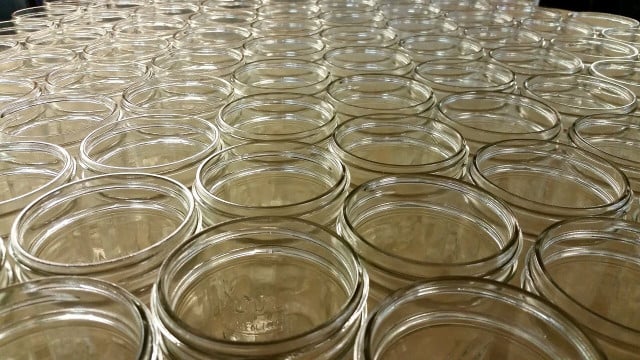
First things first. What kind of mason jar can you use to safely freeze food?
Always make sure you use completely straight, wide-mouth jars. The jars should not get more narrow toward the top, but rather have a wide opening without shoulders–this will help prevent the glass from exploding when the liquid inside them freezes.
Also, choose wide jars over tall ones. Tall ones are quicker to break and not as handy when it comes to freezing and storing your frozen food.
You can find mason jars that are safe for freezing on amazon**. If you have empty jars lying around that match the requirements, you can use those as well.
2. Filling the Jars



To avoid the disaster of broken glass in your freezer, you also need to know how to fill your jars the right way.
Whether you want to freeze soup, stock, or sauce, only fill the glass about three-fourths full, leaving plenty of space for the liquid to expand at the top. This is crucial when freezing liquids.
Solids don’t expand as much as fluids, but it also doesn’t hurt to give them a little extra room. Berries, beans, and similar solid foods also have some space to expand in-between, so you don’t need to leave as much space at the top.
3. Putting on the Lids
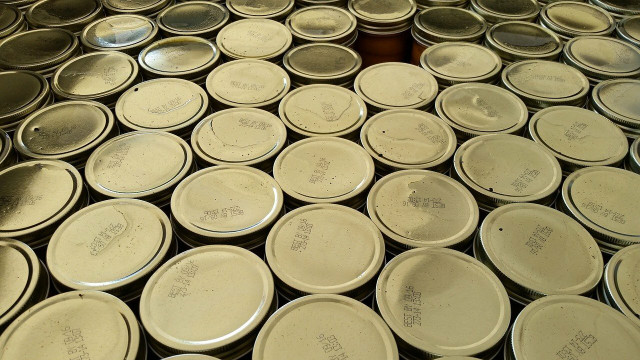


Here’s another tip to avoid unpleasant surprises in your freezer: when you first place the mason jar inside for freezing, let the lid sit loosely on top or leave it off entirely. That way, you can let air escape from the jar and keep the pressure from building up too much. Of course, you need to be careful when opening your freezer so you won’t spill anything. Once the content is frozen, you can screw the lid on tightly.
4. Storing Frozen Mason Jars
Always store jars containing liquids in an upright position. This way you make sure the frozen liquid expands evenly towards the top.
5. How to Freeze Portions Smaller than Your Jar



Say you want to freeze individual portions of soup but not use an extra jar for each, what do you do?
Simply freeze the food in ice cube trays. Once the cubes have frozen, put them in a mason jar and set the jar inside the freezer. Et voilà! You can take out as many individual cubes as needed and won’t have to thaw the entire thing. There’s certainly no need to turn to freezer bags!
You can use this method to freeze any kind of stock or soup but also to portion vegetables, such as blanched spinach, or fresh herbs–simply place the minced herbs inside the tray, add water or some olive oil, then freeze.
6. Preparing Food for the Freezer
Different ingredients need to be prepped differently before freezing:
- Before placing any food in a mason jar for freezing, make sure it has cooled thoroughly. Moreover, we recommend chilling liquids such as purée, soup, or sauce in the fridge before placing them in the freezer.
- Fresh fruit like berries or grapes should be rinsed and drained before placing them loosely into a jar. Bigger fruit like apples should be cut into pieces before freezing.
- Cauliflower, broccoli, or leafy vegetables like kale or swiss chard should be rinsed and chopped, then loosely layered inside a jar.
For more detailed instructions on freezing vegetables, herbs, and soup, also take a look at these guides:
- How to Freeze Spinach
- How to Freeze Soup: Methods, Tips and Tricks
- How to Freeze Basil
- Can You Freeze Onions? Yes – Here’s How
Tips for Thawing
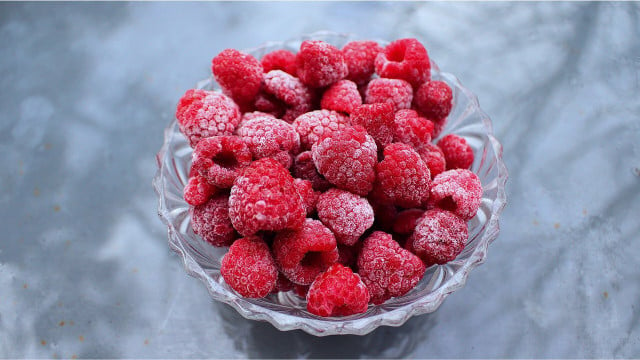


Whether you’re freezing or thawing food, always avoid extreme temperature changes. Loose fruits and vegetables can usually be picked straight out of the jar and processed right away. Thawing liquids, on the other hand, requires a bit more preparation. Just as you should never place a warm jar inside the freezer, you should also never heat any glass that you have just taken out of the freezer. This can be dangerous because it may cause the glass to burst!
Instead, take out the jar a couple of hours before you want to cook what’s inside, then let it thaw slowly in the fridge or on the countertop at room temperature. This way, if you plan to heat the entire thing, you can keep the glass from breaking.
Read more:
- Freeze Foods without Plastic: 6 Sustainable Household Hacks
- Fridge Temperature and Organization: How to Store Food Properly
- Freezing Tofu: Improved Texture and Longer Shelf Life
Do you like this post?






